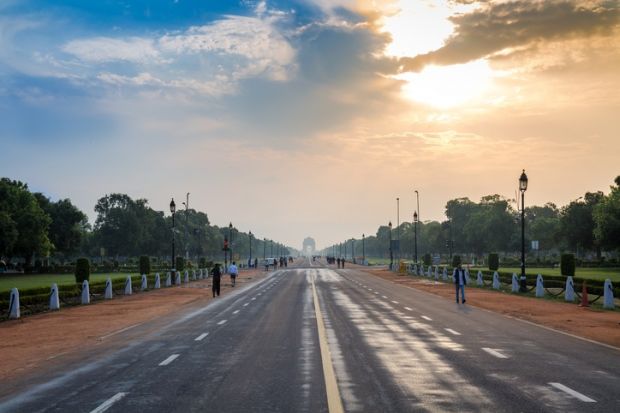Indians are doing very well in the knowledge sector. India is not. This is evident from various world university rankings in which India’s universities have consistently fared poorly. Only a couple of Indian institutions have occasionally figured among the top 200 in the world. For a country seeking to be acknowledged as a great power, the absence of great universities is a sore point.
After several non-starts, the Indian government has finally come up with a plan to promote a select number of its institutions to compete effectively on the world stage. Last August, the University Grants Commission (UGC) – the country’s main regulatory body for higher education – announced a new initiative to select 20 “institutions of eminence”. These 10 public and 10 private universities will be granted unprecedented autonomy from the government. And the public institutions will have their funding boosted to the tune of up to 10 billion rupees (approximately £110 million).
Autonomy is a buzzword in India’s higher education sector. The UGC and other regulatory bodies – and there are several – have over the decades unarguably stifled the growth and health of India’s universities. That said, the UGC has tightly stipulated what it expects from the freed institutions: to break into the world’s top 100 to 200 institutions within 10 to 15 years – or at least into the list of top 500 if they are not already there.
But since the initial announcement, things have not progressed quite as planned. The UGC invited a select number of leading universities to submit their applications by 12 December. About 100 did so. Prakash Javadekar, the minister of human resource development – who looks after education – initially expressed great satisfaction. But a few weeks later, in late January, the UGC announced an extension of the deadline to 22 February.
In a country where irregularities of all kinds are commonplace, it came to be rumoured that the extension was to enable select private universities, which had missed the first deadline or were unable to make up their mind earlier, to apply. It did not help that the names of the 100 universities that had applied initially were not made public.
In February, the UGC announced that N. Gopalaswami, the former chief election commissioner, would head a four-member “Empowered Expert Committee” to carry out the shortlisting process. The committee also includes University of Houston president Renu Khator, Harvard Business School professor Tarun Khanna and former director of various Indian management institutes Pritam Singh.
It was reported that the EEC would select the 20 institutions by April. In reality, it shortlisted 40 institutions from the 114 that eventually applied, but it then abruptly scrapped the list because the selection process apparently did not correctly capture the “best” institutions. But Gopalaswami also stated that the UGC brought to the EEC’s attention that the shortlisting was to be done only on the basis of the scores obtained by institutions in the national institutional ranking framework – a government-initiative established in 2016 to rank Indian universities – and not the global rankings and other such indicators that the EEC had used.
The EEC has now begun the entire selection process once again, and it will take another two months or so before it is completed.
Most higher education experts believe that the institutions of eminence initiative is a good one. Many point to the success of China in building highly ranked universities over the past two decades and hope that India can emulate it. However, the entire process so far has been amateurish. The guidelines issued by the UGC in September 2017 are poorly written and often lack clarity. The decision to extend the deadline several weeks after the first deadline passed was strange. So is the secrecy about the applicant institutions. And the confusion over the criteria the EEC is permitted to use is just embarrassing.
Supporters of India’s higher education can only hope that the government, the UGC and the EEC get their act together. So far, the opacity and coordination problems are just feeding the idea that, as it has with many other big initiatives in other sectors, the Indian government will make a hash of the institutions of eminence initiative.
Pushkar is director of the International Centre Goa.
POSTSCRIPT:
Print headline: A less than eminent start
Register to continue
Why register?
- Registration is free and only takes a moment
- Once registered, you can read 3 articles a month
- Sign up for our newsletter
Subscribe
Or subscribe for unlimited access to:
- Unlimited access to news, views, insights & reviews
- Digital editions
- Digital access to THE’s university and college rankings analysis
Already registered or a current subscriber? Login







